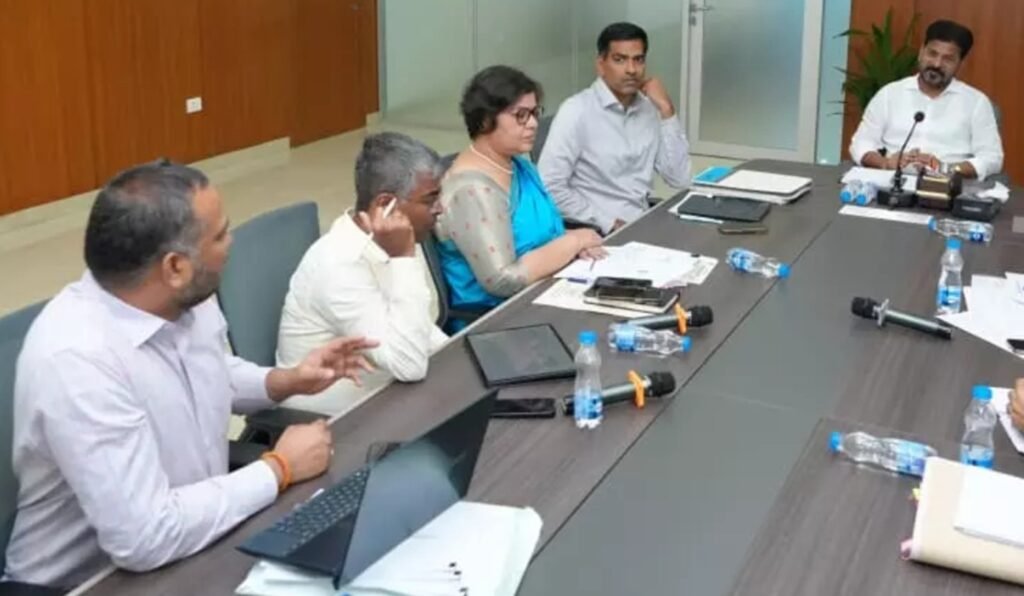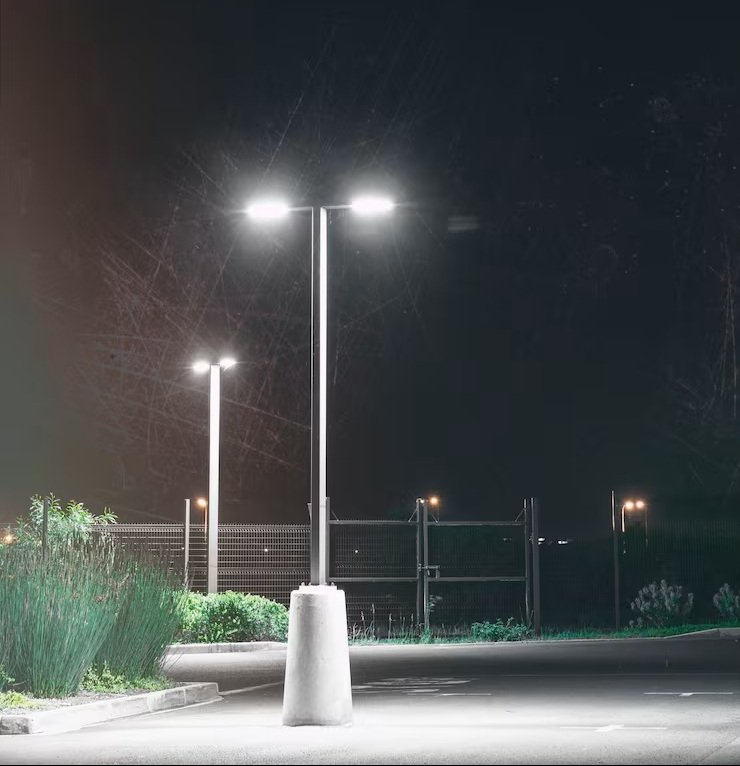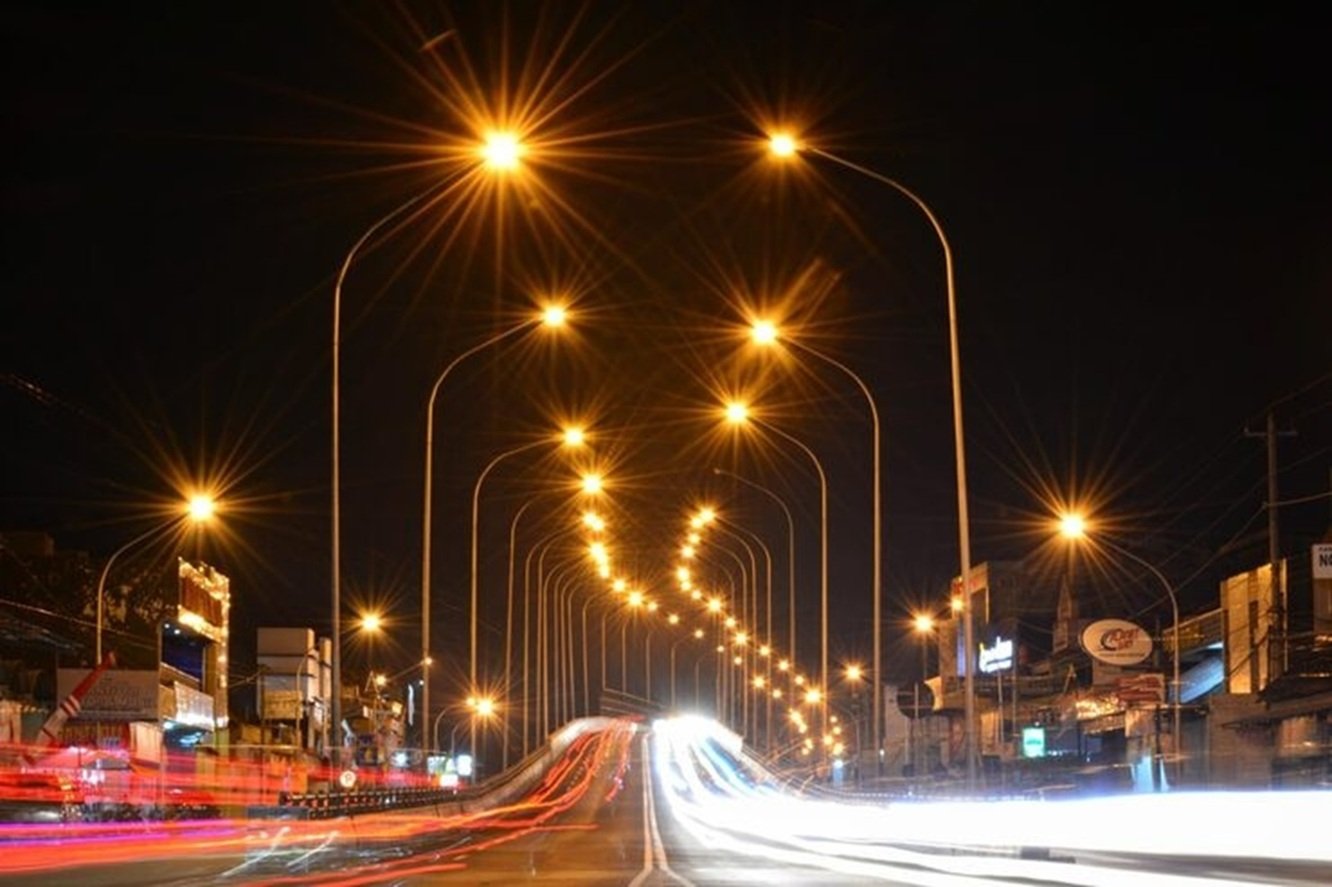Blending technology, decentralisation, & political acumen
When we talk about governance, streetlights don’t usually make the headlines. They’re so ordinary, so invisible in our everyday lives – until, of course, they stop working. But in Telangana, Chief Minister A. Revanth Reddy has turned this everyday utility into a statement about accountability, efficiency, and decentralisation of power.
At first glance, his new LED streetlight initiative seems like a straightforward infrastructure push: replace outdated lights with energy-efficient LEDs, fix broken poles, and connect everything to Hyderabad’s Integrated Command and Control Centre (ICCC) for real-time monitoring. But if you look closely, the idea is much bigger. It’s about making governance visible, literally, and putting control back into the hands of people who live closest to the problem.
Rising demand, reduced wastage
Take Hyderabad, for example. The Greater Municipal Hyderabad Corporation (GHMC) alone is managing 5.5 lakh LED lights today, and the demand will rise to 7.5 lakh once the core city inside the Outer Ring Road (ORR) is fully covered. With a monthly street lighting bill of Rs. 8 crore, this isn’t small change. By integrating the entire system into the ICCC, faults can be detected instantly, wastage reduced, and contractors held accountable.
Revanth has even insisted on seven-year contracts with reputed LED manufacturers, ensuring that maintenance isn’t an afterthought but a responsibility and a mandatory part of the system.

Decentralisation at its best: Governance at village square
But the real brilliance of this plan lies in the rural dimension. Telangana’s villages already host more than 16 lakh LED lights, but many are poorly maintained, left switched on during the day, or simply neglected because of expired contracts. Instead of leaving this gap for middlemen to exploit, Revanth has handed the responsibility directly to Sarpanches and Gram Panchayats.


Local leaders, backed by Mandal Parishad Development Officers (MPDOs) and District Collectors, will now oversee installation, maintenance, and audits. Every village will conduct a pole-to-pole survey to map requirements – no assumptions, no excuses.
This is decentralisation in its purest form. When the Chief Minister says, “I trust local leaders to manage what belongs to their people”, that shift from centralised contractors to empowered sarpanches represents not only better management, but also a political message – albeit a subtle and quiet one. Governance doesn’t always have to flow top-down; it can, and should, be rooted in the rural setting at the village level, to be tackled at the village square.
Push for sustainable solar-powered streetlights

Revanth hasn’t stopped there. He has asked officials to explore solar-powered streetlights, reducing dependence on the grid and cutting costs in the long run. He has pushed for control boxes with every installation, dashboards at mandal levels, and even third-party audits by institutions like IIT-Hyderabad. This is smart, measurable and transparent governance blended with technology.
What stands out is the accountability built into every layer. If a streetlight in a village in Warangal or Adilabad or Karimnagar doesn’t work, the sarpanch can’t shrug it off anymore. If Hyderabad’s contractors neglect their job, the Command Centre will catch it instantly. And if energy bills keep ballooning, solar feasibility studies will provide the answer.
Reflecting Revanth’s political style
In a way, this initiative reflects Revanth’s larger political style – practical, decentralised, and people-centric. Streetlights might sound like a small issue compared to mega projects or flashy schemes, but they cut across every class, caste, and constituency.
A working streetlight means safety for women walking home at night, reduced accidents on dark roads, and a sense of security in neighbourhoods. By choosing to fix the basics, Revanth is signalling that governance starts from the ground up.
The challenge, of course, lies in execution. Will local sarpanches rise to the responsibility? Will contractors play fair under tighter rules? Will solar adoption move beyond feasibility studies into actual installations? These are questions only time can answer.
But for now, Revanth Reddy has shown political acumen and pro-active leadership in the most unlikely of spaces – streetlighting. He has turned a routine civic function into a test case for decentralisation, accountability, and smart governance. And in doing so, he’s reminding us that real change doesn’t always come with grand announcements; sometimes, it’s as simple as making sure the light stays on.



annanya
Revanth Reddy’s LED streetlight plan shows progress in energy efficiency, but it needs a stronger push toward renewable integration and smart automation. Telangana can expand solar-powered systems, use IoT-based fault detection, and promote local data dashboards for transparency. Instead of just replacing lights, the focus should be on sustainable design, community training, and long-term maintenance using eco-friendly materials. This would turn the project into a real model of green infrastructure and digital sustainability — not just illumination. 💡
K Sunitha rathod
There is alot of unemployment
Respected Revanth reddy sir I request you to don’t trust all politicians blindly
Develope Vikarabad because I belong to that constituency
Vikarabad road should be developing
Don’t implement free schemes
Help people who are poor and give an opportunity to study
No deforestation for development of technology
Implement Strict rules in traffic
Youth should be aware of drugs
M Bala Kishore
కాంగ్రెస్ ప్రభుత్వం మంచి పరిపాలన అందించడం జరుగుతుంది
Madhu ENAGANDULA
NA PERU ENAGANDULA MADHU MADHI MANDAMARRI MANCHIRAIAL JILLA
MA OORI LO NERUDOYAGAM CHALA UNDHI EKADA SARI INA JOBS LEKA MANCHIRAIAL LEKUNTEY HYDBAD VELTUNNARU KABHATTI EKKADA KONNI JOBS PRABHUTVA PARANGA PRAVET PARANGA CHUDALANI NA VENNAPAM
Oil palm cultivation is increasing in the surrendering areas.A factory provides direct employment and indirect jobs
Transport , suport services.
Small and medium Enterprises for manufacturing ,ripair, and service of equipment needed by tha SCCL coal mines
Unit processing waste from the coal mines ash or municipal waste , which also addresses environmental concerns
Thankyou
Madhu ENAGANDULA
Sampath
Prathi gramam lo prathi intiki solar subsidi ivvali
Mohammad Mousin
Telangana the fast emerging state
డావలయ్య. పోలె
రాష్ట్ర ప్రభుత్వానికి నమస్కారం. మా యొక్క అభిప్రాయం.
👉 రాష్ట్ర ప్రజలకు ముఖ్యంగా పేదరికంలో ఉన్న ప్రజల పిల్లల చదువులపైన దృష్టి కేంద్రీకరించాలి.విద్యా రంగంలో 100 శాతం పురోగతి సాధించాలి.
👉సరైన వైద్యం చేయించుకోలేక ఆర్థికంగా బక్కచిక్కిపోయిన ప్రతి ఒక్కరికి ఉచిత వైద్య సదుపాయం కల్పించాలి.
👉ముఖ్యంగా ఉచిత పథకాలు కాకుండా రాష్ట్ర ప్రజలలో కష్టానికి సరైన ప్రతిఫలం అందేలా చూడాలి.
👉 విపత్కర పరిస్థితుల్లో రాష్ట్ర రైతాంగాన్ని ప్రభుత్వ పరంగా ఆదుకోవాలి.
👉కొంత మంది అధికారులు క్షేత్ర స్థాయి నుండి ఉన్నత స్థాయి వరకు కార్యాలయంలో హాజరు అయితే చాలు. అనే చందంగా పనిచేస్తున్నారు. అలాంటి వారికి ప్రజలకు సేవ చేయాలనే సంకల్పాన్ని నెలకొల్పేల వారి ప్రవర్తనలో మార్పు కోసం శిక్షణ కార్యక్రమాలు చేపట్టాలి.
👉కొంతమంది అధికారులు లంచం కోసమే పని చేస్తున్నారు. అలాంటి వారికి పని పట్ల అంకితభావంతో చేసేటట్లు వారిలో మార్పు తీసుకురావాలి.
👉ప్రజా ప్రతినిధులు ఎన్నికలలో డబ్బు పంపిణీ లేకుండా చూడాలి.
👉డ్రగ్స్ మరియు అక్రమ మద్యం పైన కఠినంగా వ్యవహరించాలి.
👉రవాణా వ్యవస్థను మెరుగుపర్చాలి.
👉ప్రభుత్వ సొమ్ము దుర్వినియోగం కాకుండా అధికారులు చర్యలు చేపట్టాలి.
👉యువత చెడు మార్గంలో వెళ్లకుండా వారికి ఉపాధి అవకాశాలు కల్పించాలి.
👉రవాణా వ్యవస్థను మెరుగుపర్చాలి.
👉మరి ముఖ్యంగా ప్రజలు, ప్రజాప్రతినిధులు, అధికారులు మన రాష్ట్రం మన ప్రగతి అనే ఆలోచన విధానంతో ముందుకు సాగాలి.
ధన్యవాదాలు🙏🙏🙏
Dharavath Sudhakar
Need to develop villages more better to do for each village need library, primary health care centre, primary school, temples,roads, drainage system must be provided by government of telangana
Jeevana Priya
Jai Telangana,
Baddipadiga anil
People government
Repalle vijay
Meeru vachaka chalabaga chesharu sir sanna biyyam indiramma illu current runa maafi free bus jobs kani chestunnaru meeru malli malli raavalani korukuntunam sir 🙏🙏🙏🙏🙏🙏🙏🙏 jai Congress jai telangana raising 🤝🤝🤝🤝🤝🤝
Majid Anwar Mohiuddin
Prode to be an Indian state government of telangana
Gaddam aridhar
E congress govt maku vaddu
Mandu Priyanka
Actually what your doing is really it’s helpful to people but there is loose to government coming to jobs really youth is waiting for the notification and really it’s proud of to get you
J. Praveen
సోలార్ లైట్స్ వాళ్ళ చాలా ఉపయోగం ఉన్నది
GADDAM SRINIVAS
I don’t like free pathakalu,,all people s somaripothulu aithunnaru
B.Rajagangarm
good job Revanth Reddy CM of Telangana
Chenna Kiran chand
Jai tealangana
Chunchu Rajendra Prasad
Meeru vachaka chalabaga chesharu sir sanna biyyam indiramma illu current runa maafi free bus jobs kani chestunnaru meeru malli ravalani, development of muse river, very good decision.
K Bojja Reddy
Proposal to Strengthen Telangana’s Agricultural Sector through Infrastructure Development
To:
The Honorable Chief Minister, Government of Telangana
Dear Sir
I extend my heartfelt appreciation for the Government of Telangana’s initiative to seek feedback from citizens to foster inclusive governance. As a concerned citizen, I propose a transformative approach to empower farmers, the backbone of our nation, by prioritizing sustainable infrastructure over freebie schemes. This proposal outlines a strategic plan to enhance agricultural profitability and resilience in Telangana.
Problem Statement:
Since independence, farmers have faced significant challenges due to inadequate infrastructure, such as cold storage, reliable power, water supply, and road networks. These gaps force farmers to sell their produce at suboptimal prices, leading to financial distress. Additionally, freebie schemes, while well-intentioned, often divert resources from long-term solutions and contribute to labor shortages in agriculture.
Proposed Solution: Mandal-Wise Cold Storage and Supporting Infrastructure
To address these challenges, I urge the government to redirect funds currently allocated to freebie programs toward building robust agricultural infrastructure. The key components of this proposal are:
1. Establish Cold Storage Facilities:
• Construct modern cold storage plants at the Gram Panchayat or Mandal level to enable farmers to store their produce and sell at favorable market rates.
• Equip each facility with solar power plants to minimize electricity costs, ensuring low maintenance and operational expenses.
• Charge farmers a nominal rent for using these facilities, with priority access given to local village farmers, followed by Mandal farmers, and then others. This ensures equitable access while maintaining financial sustainability.
2. Enhance Supporting Infrastructure:
• Provide consistent, high-quality power supply to support cold storage operations and other agricultural needs.
• Ensure reliable water supply for irrigation through efficient canal systems or borewell support.
• Develop and maintain robust road networks to connect farms to markets, reducing transportation costs and delays.
3. Phase Out Freebie Schemes:
• Gradually eliminate freebies to redirect funds toward infrastructure development. This shift will encourage self-reliance among farmers and attract quality labor to the agricultural sector, as dependency on handouts diminishes.
Expected Benefits:
• Economic Empowerment: Farmers can store produce longer, enabling them to sell at optimal prices, increasing income and financial stability.
• Sustainability: Solar-powered cold storage reduces operational costs and promotes eco-friendly practices.
• Labor Efficiency: Phasing out freebies will encourage a stronger agricultural workforce, addressing labor shortages.
• State Prosperity: Strengthened farmers will contribute to Telangana’s economic growth, making agriculture a sustainable and profitable sector.
Conclusion:
Investing in cold storage, reliable power, water, and road infrastructure will create a resilient agricultural ecosystem in Telangana. By prioritizing long-term solutions over short-term freebies, the government can empower farmers to thrive, ensuring food security and economic prosperity for the state. I respectfully request the Government of Telangana to consider this proposal and take actionable steps to implement these reforms.
Sincerely,
Concerned Citizen of Telangana
మద్దసాని వీరారెడ్డి
It’s a great ideology which reduces the utility of electricity by using solar panels to supply power for the street lights hat’s off to the Government of Telangana for this.